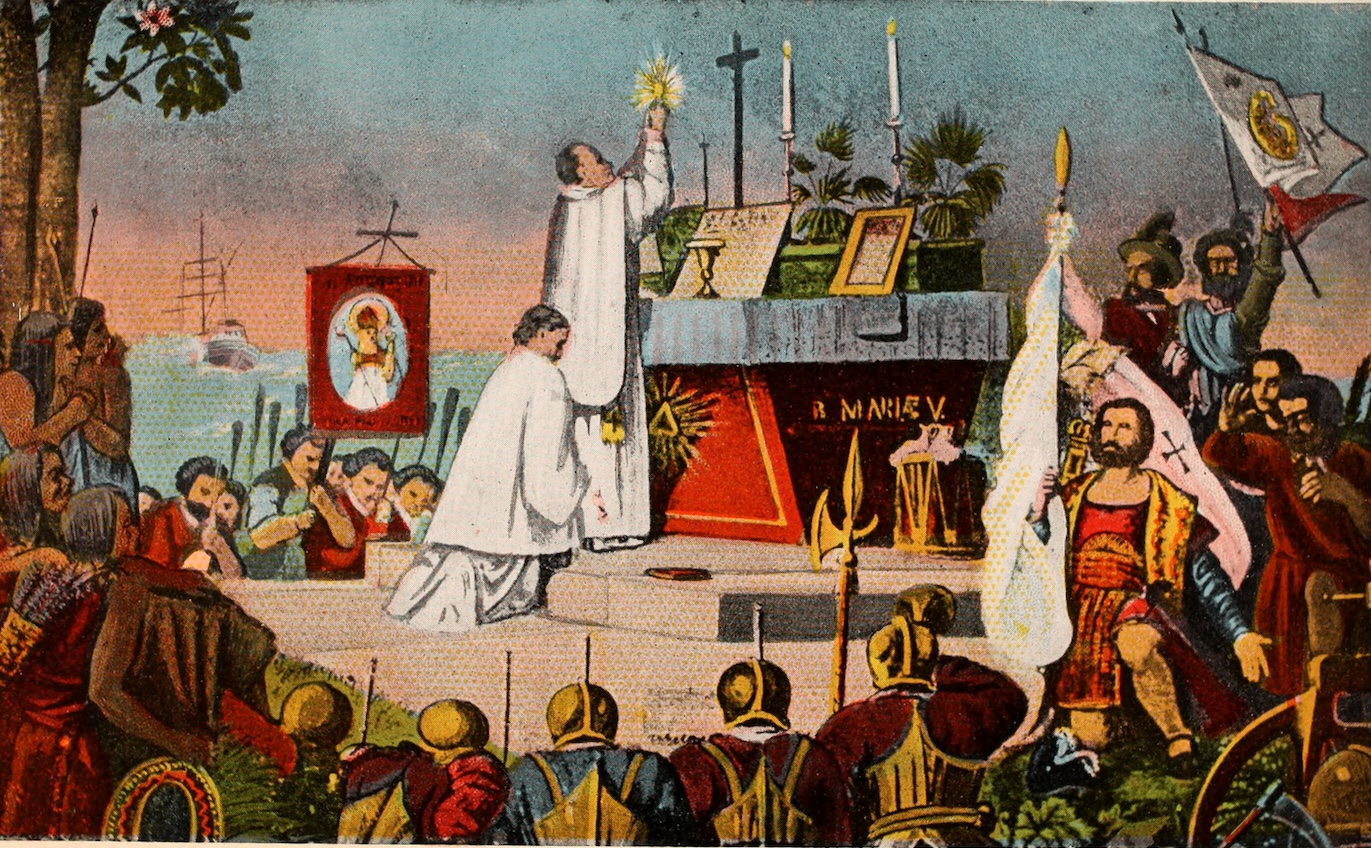The Dean of Canterbury wanted to provoke a reaction with graffiti – and he succeeded. British Christians were distraught at the vandalism of England’s oldest cathedral, but the “art” also invited comment from across the pond, with Vance, Cruz, and Musk all voicing disapproval. The question many are rightly asking is: why wound, disturb, disorder, disrupt, and pollute a sacred space?
Before we examine this question, let us look at the wider historical dimension of Catholic cathedrals in the hands of curating Protestants. For the Anglican Church has form — golf courses, helter-skelters, film noir clubs — and this Dean in particular also has form, with drunken dancing raves in the nave.
At the broadest level, there is a pain felt by Catholics at the abuse of their buildings following the state-sponsored Protestant takeover. We find ourselves discomforted by the question of why Anglicanism seems unable or unwilling to curate what was conceived in the Catholic imagination as a holy place in a way consistent with that vision. Perhaps it has something to do with the absence of the supernatural in the Communion service. An act of remembrance finds its locus in the person remembering. It is not the same as the miracle of the Mass where, just as Jesus turned water into wine, the bread and wine of the Mass are turned into Christ, and the place where that happens shares in the dramatic, awesome holiness of the act itself. No transubstantiation, no miracle. No miracle, no awe. No awe — and no sense of holy ground worthy of respect.
As so many critics of the graffiti have mentioned, this project by Mr Monteith would have worked very well in an underground car park. In fact, the art would actually have been more congruent there. The bleakness of the graffiti would have melted into the bleakness of the functional concrete, and the questions the graffiti raised might have been more accessible — unblocked by the horror and revulsion that so many people felt when they saw an act of both artistic and spiritual desecration of a place of such beauty.
There are additional aspects that ought to be taken into consideration since this incident, in which the Anglican authorities at Canterbury created an act of vandalism. The Dean of Canterbury gave a clue as to the values he was embodying, and we may need to take him seriously to understand what he set out to do and why he set out to do it. Explaining the art he said: “There is a rawness which is magnified by the graffiti style, which is disruptive… it is unfiltered and not tidied up or sanitised.”
So, let’s take him at his word. Let’s explore what this means. What does he understand by raw? This usually describes an open wound or part of the body or soul that is in pain and unhealed. Why does he want to invoke an open wound and the pain and danger of infection it represents? There is a serious juxtaposition — or more realistically, a contradiction — between that and the cathedral, and the whole enterprise of Christian salvation, which is about the healing of wounds. The human condition without Christ is indeed raw. Without Christ, the soul is an open wound. Faith in Christ — our encounter with Christ — is about finding forgiveness, peace, restitution, restoration, and freedom from pain: the healing of the raw existential wound.
But David Monteith wants to celebrate not the healing, but the wound itself. Would a therapist or a spiritual director invite him to reflect on whether perhaps he carries in himself an open wound — one that he is acting out? Whatever his motivation, he set out to wound the cathedral and what it stands for with jagged anti-art, and found in the angry energy and confusion embedded in graffiti the perfect tool to do it.
To continue to parse his meaning, what does he mean by disruption? In choosing between order and disorder — or, at the extreme, anarchy — the question arises of where holiness and sanctity lie on that spectrum. Holiness is usually associated with order, and order with holiness. In the Gospels, the Kingdom of Heaven is a restored order in which obedience, hierarchy, and the authority of God allow us to find a place of safety and belonging. When Jesus teaches us to pray “thy kingdom come”, very few hear it as a call for disruption. There might be scope for thinking of the disruption of evil and its hold on us. But evil is more usually associated with chaos than order. Disruption is more usually a tool of rebellion than of healing.
The Incarnation has been seen as the divine order of the Creator of the universe — a place of beautifully ordered astronomical and scientific coherence — entering the disorder and chaos of history. David Monteith wants to disrupt order. If order and holiness are connected, as the Church has always believed and experienced, then disruption becomes a sign of the “other side”, a reflection of opposition and spiritual rebellion. It would not be too much to say that it carries the instinct of being anti-God.
The graffiti in the cathedral does exactly what Mr Monteith intended. In a way that is opposed to the coherent curves, symmetry, and space of the cathedral’s architecture, the graffiti is incoherent. Its jagged edges express a contempt for the beauty of proportion. What moral or spiritual character does that carry with it? It is an extension of discomfort with order. To undermine or destroy order, one disrupts.
Of all Christian buildings, a cathedral represents the order and beauty of the creative mind that spun the universe into being, and arranged both the biology and beauty of life itself in an ordered fashion. Disorder and disruption destroy the precarious order of existence. They disturb the interdependence of things and people. It is the lexicon of destruction and, ultimately, death.
Mr Monteith also wants the “unfiltered – not sanitised.” Why the Monteith preoccupation with the unfiltered? We use filtration to remove impurities. Mr Monteith wants his sponsored art to deepen the impurity. Impurity poisons. Many observers felt that the graffiti was art that poisoned — toxic to the mind. Where beauty brings peace, the angular, edgy, and ugly bring toxicity to soul and mind.
To sanitise is to make clean, to purify. But the Monteith vision is to un-sanitise, which is to pollute. He succeeded.
Mr Monteith set out to raise some theological questions — and he has, mainly: why wound, disturb, disorder, disrupt, and pollute a cathedral? They are not the questions that captured his imagination and attention when he embarked on this course of destruction, but they are the ones he has provoked among civilised people across the world.




.jpg)



.jpg)
.jpg)






